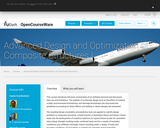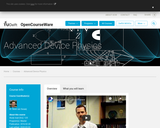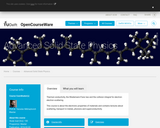
Activity for HIST 1301 United States History I (Introduction)
- Subject:
- U.S. History
- Material Type:
- Activity/Lab
- Author:
- Jessica Herzogenrath
- Kaitlyn Ross
- Regan Murr
- Date Added:
- 08/22/2022

Activity for HIST 1301 United States History I (Introduction)

Activity for HIST 1301: United States History I (Introduction)

Activity for HIST 1301: United States History I (Module 12)

Activity for HIST 1301: United States History I (Module 13)

Activity for HIST 1301: United States History I (Module 14)

Activity for HIST 1301 United States History I (Module 1)

Activity for HIST 1301 United States History I (Module 2)

Activity for HIST 1301 United States History I (Module 3)

Activity for HIST 1301 United States History I (Module 3)

Activity for HIST 1301 United States History I (Module 4)

Activity for HIST 1301 United States History I (Module 4)

Activity for HIST 1301: United States History I (Module 5)

Activity for HIST 1301 United States History I (Module 5)

Activity for HIST 1301: United States History I (Module 6)

Activity for HIST 1301: United States History I (Module 8)

Activity for HIST 1301: United States History I (Module 9)

As faculty, you assess textbooks against a set of criteria that reflects your long experience and knowledge of student needs. You do the same with Open Textbooks, but there are a few additional considerations.

This course introduces the basic components of an airframe structure and discusses their use and limitations. The realities of composite design such as the effect of material scatter, environmental knockdowns, and damage knockdowns are discussed and guidelines accounting for these effects and leading to robust designs are presented.
The resulting design constraints and predictive tools are applied to real-life design problems in composite structures. A brief revision of lamination theory and failure criteria leads into the development of analytical solutions for typical failure modes for monolithic skins (layup strength, buckling under combined loads and for a variety of boundary conditions) and stiffeners (strength, column buckling under a variety of loads and boundary conditions, local buckling or crippling for one-edge and no-edge-free conditions). These are then combined into stiffened composite structures where additional failure modes such as skin-stiffener separation are considered. Analogous treatment of sandwich skins examines buckling, wrinkling, crimping, intra-cellular buckling failure modes. Once the basic analysis and design techniques have been presented, typical designs (e.g. flange layup, stiffness, taper requirements) are presented and a series of design guidelines (stiffness mismatch minimization, symmetric and balanced layups, 10% rule, etc.) addressing layup and geometry are discussed. On the metal side, the corresponding design practices and analysis methods are presented for the more important failure modes (buckling, crippling) and comparisons to composite designs are made. A design problem is given in the end as an application of the material in this Part of the course.

This course will focus for a large part on MOSFET and CMOS, but also on heterojunction BJT, and photonic devices.First non-ideal characteristics of MOSFETs will be discussed, like channel-length modulation and short-channel effects. We will also pay attention to threshold voltage modification by varying the dopant concentration. Further, MOS scaling will be discussed. A combination of an n-channel and p-channel MOSFET is used for CMOS devices that form the basis for current digital technology. The operation of a CMOS inverter will be explained. We will explain in more detail how the transfer characteristics relate to the CMOS design.

This course is about the electronic properties of materials and contains lectures about scattering, transport in metals, phonons and superconductivity.